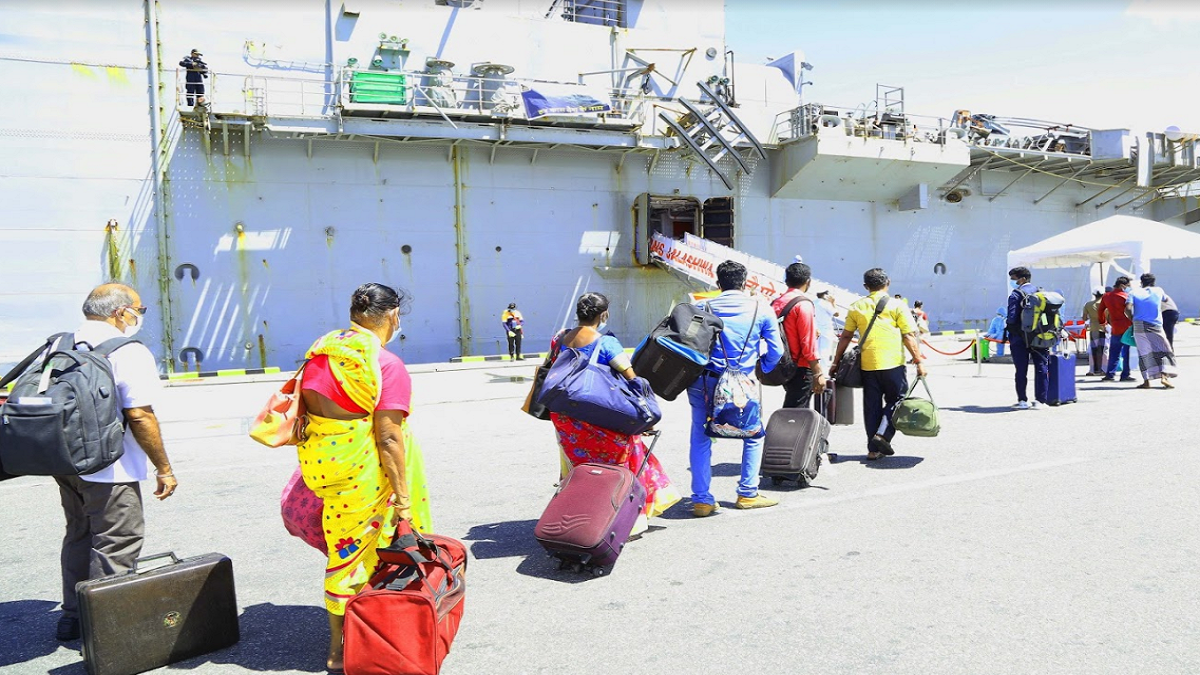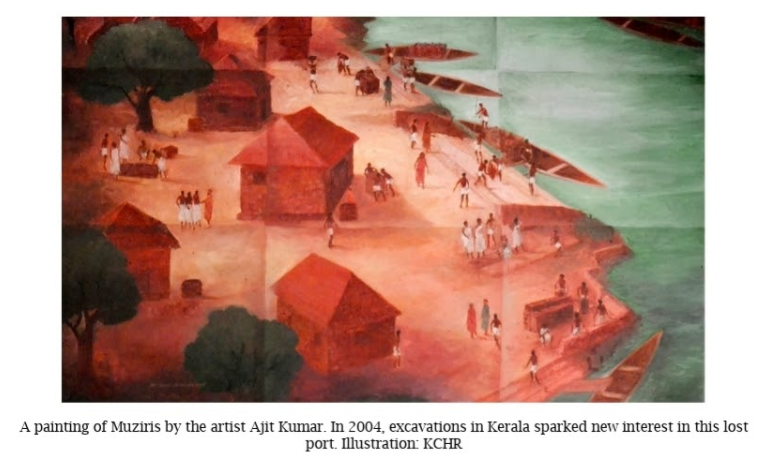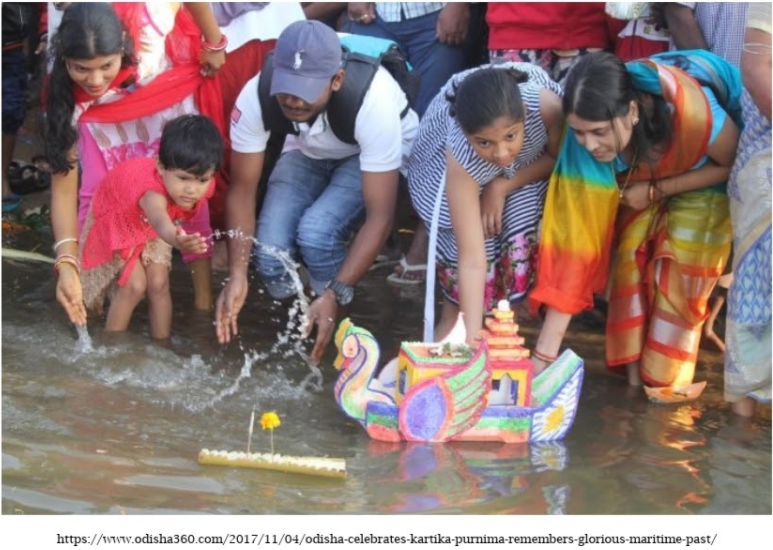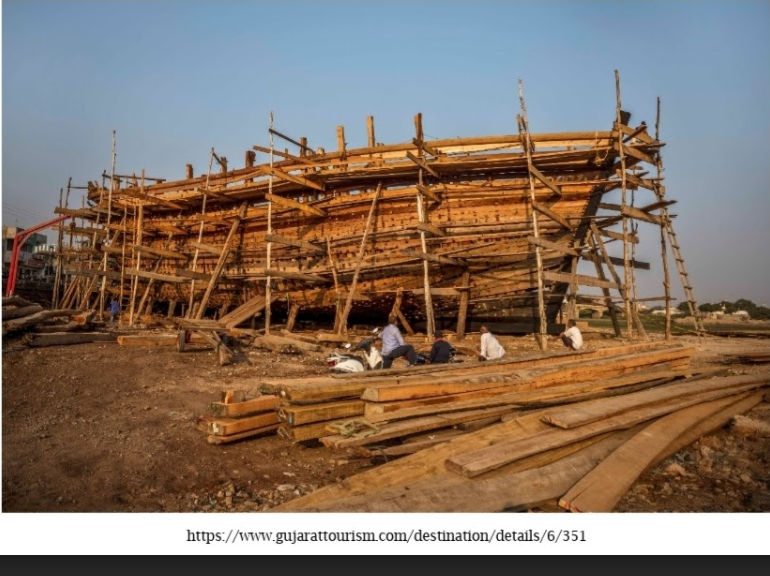


Size is never an indication of significance, is a maxim that has taken the world by storm even as a little virus has steered the waves of our imagination and attention through nearly six months. The resulting world has turned somehow more egalitarian with connectivity through two-dimensional digital media breaking conventional thought processes and hierarchies. Silently, the oceanic medium as the great commons, presents the largest canvas of history and heritage to remain a frontier of connectivity amidst cultures and contestations. This article draws attention to the waters surrounding the Indian peninsula and its narrative in an attempt to trigger interest and greater involvement and sea-mindedness.
As global governments and agencies grapple with the pandemic, the Indian Navy has selflessly contributed by taking the responsibility of serving the nation’s cause, deserves acknowledgement and appreciation. The primary objective of the Indian Navy has always been to safeguard the nation’s maritime borders in conjunction with other armed forces of the Union, and to discourage or defeat any threats or aggression against Indian territory, its people or maritime interests during war and peace. India has launched a massive effort to evacuate Indian citizens who have been stranded in various countries due to the travel lockdown due to Covid-19 pandemic under the “Vande Bharat” mission and the Indian Navy named its evacuation operation “Samudra Setu” i.e. Sea Bridge, an exercise which might be one of the largest efforts in importance and reach in a historical significance. Yet, India is not new in building maritime heritage as her seas are witnesses to a flow of events through time.

Indian knowledge systems have always valued the concept that ‘all life comes from the ocean’, taking it back to when flippers became legs through an amphibian transition. Walking, talking and traveling is a short extract of a saga which is celebrated as ‘man and ocean’ connection. Indeed, what is a better time to recall this than current global economic upheavals and employment crises due to the virus for celebrating a festival that truly represents the spirit of commerce and finance since ancient times.

It is a lockdown period with month of Shravan behind us and rains of Bhadrapada upon us. Sea has always been the centre of human existence and has been associated with a variety of celebrations and rituals across ages. They throw light on how India’s sociological lineage of seasonal festivals and associated rituals, prevalent among certain coastal communities depict the flourishing maritime practices of yore. They also indicate a clear connect between the maritime voyages and the climatological time frames. Let us travel across the coastline of ‘Maritime India’ to get a snapshot of a great heritage saga.

The first narrative is festive. The essence of the festival of ‘Khudrukuni Osha’ lies in the story of Tapoi which depicts the safe return of her brothers and father from Bali. It is celebrated mainly in the coastal region of Odisha in the month of ‘Bhadrapada’ and is closely connected with the festival of Boita Bandana or Bali Yatra. Narali Purnima celebrated in the Konkan Coast marks the beginning of venturing out in the safe seas after a brief gap due to the monsoons. The seafarers manage their time by undertaking boat-repairs, net-making, rope-making during this period which is of utmost importance in their activities while on sail. Bali Yatra or Boita Bandana bears testimony to the rich maritime legacy of ancient Orissa. It epitomizes the application of climate and weather to navigational advantage by ancient Indian mariners. Indian mariners appear to have learned enough about the monsoon winds and ocean currents and used this practically to sail across the Indian Ocean to the islands of Indonesia. Celebrated on the day of Kartik Purnima, this was considered to be the most auspicious day to set off on a maritime venture as the wind, the currents and the prevalent weather played a crucial role in fixing the route and was most suited for their journey to the islands of Bali, Sumatra and Java. The discovery of archaeological artefacts such as pottery, beads, coins all along the eastern coast of India and that in Sri Lanka, Bali, Vietnam, Sumatra etc. corroborates that there indeed was a flourishing maritime trade of India with countries in the far east.
These cultural celebrations linked with the climatological aspects that aided in navigation speak volumes about our Indian nautical traditions, practices and of course emotions as women give a hearty send-off to their loved ones. It can be thus understood that, with time, overseas trading dwindled and the present-day Odisha is known more for agriculture and mines than for its maritime splendour. However, traditions remain. Thousands of lamps lit up the landscape in the predawn darkness, making a wonderful commemoration of those ancient, glorious times. Merchants may no longer sail the seas, but we acknowledge the foundation our ancestors laid for vibrant trade and cultural exchanges, and pay tribute to the Kalingan sailors where women recite the Odiya lyrics– ‘Aa-KaMa-Bai, Pana-Gua- Thoi’. The ritual by launching a paper boat or a boat made of banana peels with clay diya placed inside, makes a marvellous event to watch thousands of such boats floating on the river water/ water tanks and thousands of people conglomerating with colourful dresses creating a joyful mood.
The blowing of conch, music, dance, ritual funfair and bursting crackers being the mega events of the day contribute to making of an unforgettable event, and the ‘boat’ we see full of emotions, connections and values sails far into the sea. It is worthy to note that indeed this ‘boat’, a symbol of journey into voyage of life became an object of reverence for many, as a lot of lives depended on it, and that’s why ship building itself counts as a heritage full of traditions and values. And this is why just like the coastal festivals and rituals, the ship building tradition of India, practiced since ancient times, which talks immensely about the flourishing maritime link between the Indian subcontinent and other parts of the world, deserves attention.
The second narrative is of technical prowess in maritime. Indian coastline, was and is dotted with numerous ports and harbours, actively supporting maritime activities of the local and coastal traders as well as fishing communities, and thus boat-building and portrelated communities thrived. Ships proved to be the catalysts for securing trade links, exchange of cultures and supporting warfare at sea. From reed boats to massive ocean-going vessels, it is evident that India has a rich shipbuilding heritage.
It is very interesting to note how under the various rulers, shipbuilding and repair yards were set up along the western and eastern coastline. One such example which can be quoted here is that of Mandvi, a small town in Gujarat, located on the western coast of India which continues to practice the traditional craft of shipbuilding even today. The ships are constructed with full precision and without drawings and written measurements. The design is in the minds of the boat builders and a small model is prepared prior to the creation of the big vessel. Every small element of the ship is constructed manually by the craftsmen without a formal degree.
The small-scale model is then converted into a life-size ocean-going vessel. They are trained by the previous generations, working in the same field and making the boat with the knowledge embedded in their mind. The process that involves laying the keel, building the structure and filling in a sealant using fish and oil (a traditional technique for water proofing) is all done by the skilled craftsmen. Their craftsmanship is well appreciated by the Arabs who continue to purchase the vessels even today. The boat is constructed entirely on the silted land along the Rukhmati river coast. The entire coastline becomes the yard. Once the boat is completed, the land beneath the boat is dug up using minimal machinery. Once the water level rises to the adequate levels, the boat is flagged off. Today, with the rapid evolution in technology and material, the intangible heritage which gives birth to a tangible boat is declining. It is very disappointing to know that initially around 20 boats were used to be built at a stretch while now as less as 2 boats are built. Once a thriving port, Mandvi, that practices the tradition of boat building for the last 400 years is now on the verge of closing down. The rich heritage of ship building and constructing the boats using traditional techniques and material will thus slowly disappear with the modern generation. The ship building heritage of India is in an alarming situation and thus needs to be looked into, preserved, and promoted since, the vessels are an object of reverence and are worshipped by the coastal and seafaring communities and possess immense material value in their lives.
The third jewel in this heritage tapestry is archaeology. When we talk about the material value, it is noteworthy that the material we use speaks volumes about man and his life and this is why archaeologists and heritage enthusiasts treasure them. Archaeologists all over the world don’t dig up the past, but unearth stories of people using a single source known as material culture. These remains can be any objects that people created, modified, or used to learn how people lived in specific times and places, daily lives, their interactions with each other and the environment and surroundings, beliefs and values.
A similar attempt was made a few years ago to understand the maritime past of India, and the outcome was super interesting. Sites which immensely contributed to India’s rich maritime history such as Kaveripattinam, Kodumanal, Arikamedu, Pattanam and many more were identified and studied on a large scale. One amongst them was the site of Pattanam in Ernakulam district in the state of Kerala. Excavations at Pattanam add to the story of the strong maritime contacts of the South West Coast of India with the Mesopotamian and Mediterranean regions. It was an extensive excavation conducted as part of the Muziris Heritage Project by the Kerala Council for Historical Research (KCHR), in collaboration with the Archaeological Survey of India (ASI) and various institutes. The word ‘Pattanam’ has ancient origins and means port city. It played an unparalleled role in activities along the Malabar coast in early Indian Ocean trade. Ceramics such as ‘Terra sigillata’, ‘Amphorae’, etc which belong to foreign origin were found on a large scale. Excavations revealed a wharf and a warehouse structure, a wooden canoe in a waterlogged context, along with nine bollards of teakwood. The wharf proved to be a unique and important find giving further clues to the maritime association of the site. The impressive range of evidence unearthed at ‘Pattanam’ on maritime exchanges across the Indian Ocean, the Red Sea and the Mediterranean region indicate oceanic trade that began 15 centuries before what the world knew about the voyages of Christopher Columbus and Vasco da Gama in the last decade of the 15th century CE. The significance of ‘Pattanam’ is that it was an outstanding example of sons of the region, who, with their technology, craftsmanship, architecture and immense natural wealth, made excellent use of both land and sea, contributing to maritime trade connected with the world.
Three short narrations cannot a full saga make but may tickle your mental taste buds for more. Come awaken an inquiry into how we sailed through our rich maritime past taking into account the factor of heritage. Thus, one can by now understand that though the word ‘heritage’ can be defined into various angles, it is basically a quality or possession which has been passed on from one generation to another, shaping the past and present, and influencing the future and building our identity.
As the Indian Ocean has been a major means of communication of earliest long-distance navigations between the western and the eastern parts of Asia, Africa and often extending well upto much of Europe for several millennia, it has witnessed extensive maritime trade, naval expeditions and pilgrimages across its extensive network. Oceanic activity in the region encouraged by the unique feature of monsoons allowed the countries to have an active participation in maritime trade, thus creating a long history covering a period of about five millennia from the very dawn of the Indus Valley civilization. Thus, maritime history and heritage, as a subset of the vast heritage left behind, is indeed a testimony of our strong connections and relationship with the sea. Ships traversing the ocean carried valuable merchandise, skills, knowledge, civilization, culture, religions ideas inventions, artistic style, philosophies, and social customs from one end to another. There was a golden age of Indian seafaring, a major part of it remaining unknown or unexplored creating an opportunity for us at Maritime History Society.
Indeed, if earth is said to have been born 4.5 billion years ago, then the abovementioned stories were just three pieces put together of a vast treasure of knowledge hidden under the maritime dimension in the form of arts, customs and traditions. From prehistoric times to modern period and till date, from stories of Indian mythologies to their depictions on tangible aspects of heritage like temples, coins, etc, from gaining food to gaining wealth, a sea or an ocean forms to be an indispensable part of human lives and a huge secret keeper of past civilisations. Since the nation is recognised through its achievements and our past achievements survive in the form of traditions, histories and culture, this segment of heritage maritime history offers a huge scope to connect globally and celebrate the common or shared heritage.
It can be a matter of pride that today, chapter ‘Samudra Setu’ is indeed a legacy carried ahead from ample of such cultural setus built across the seas in the past. Studying them is a responsibility and pride as after all maritime heritage is that link which enables us to build bridges across the seas connecting countries, cultures and civilisations and we being researchers, it’s our duty to uncover and sing glories of their connections and contribution to humankind. Maritime History Society has attempted over 42 years to flame the fire of knowledge pursuit to consolidate our heritage at sea and hopefully get the geography to lead to the sea where life begins and sustains. Let heritage awaken our maritime consciousness.
The author is director and head of research at Maritime History Society, an academic initiative of Western Naval Command of Indian Navy.